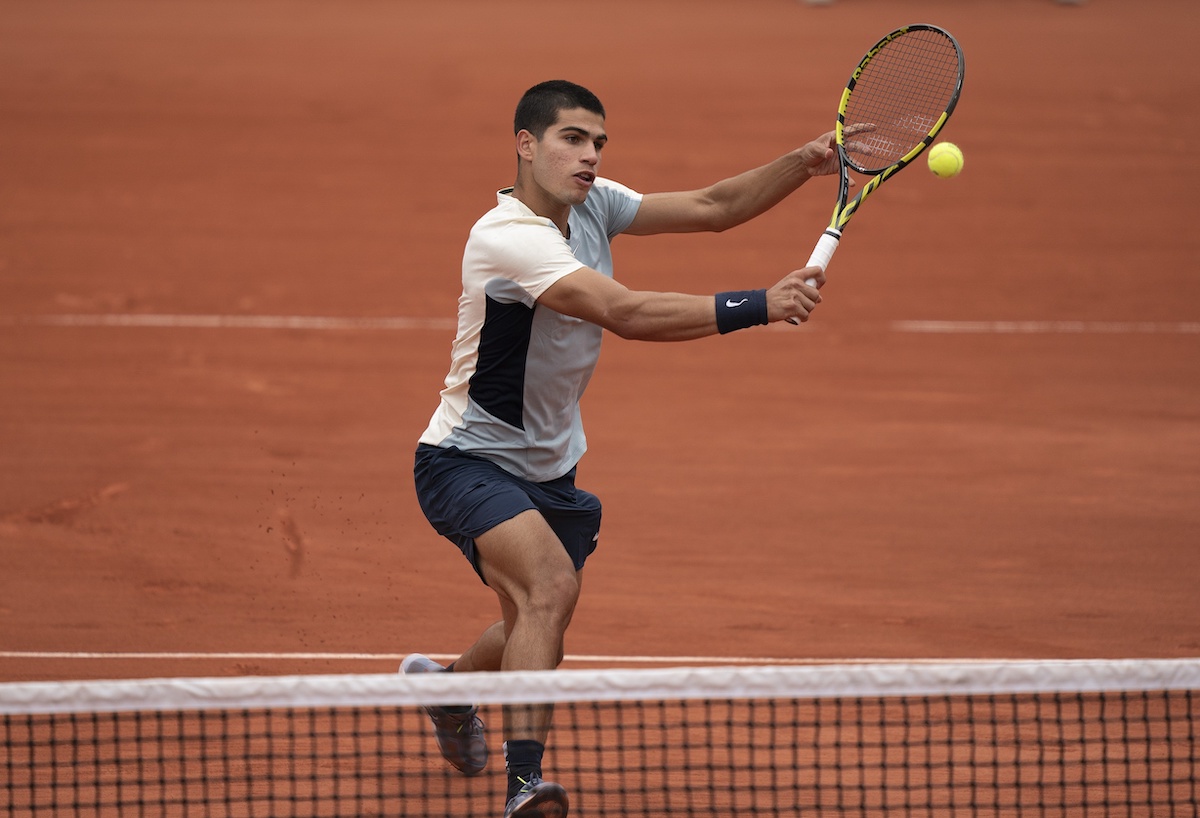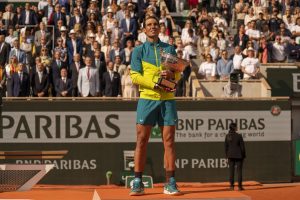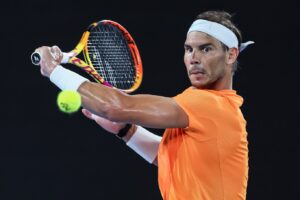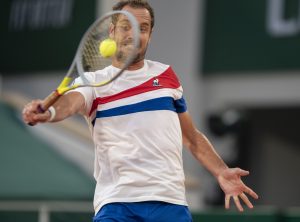Rafael Nadal’s absence from the 2023 French Open will be almost palpable. For nearly 20 years, the great Spaniard has dominated the tournament, winning it a remarkable 14 times in total, which is now the record number of times that any player, man or woman, has won a single Major. And yet, with all due apologies to Nadal, his absence could also mean that this year’s tournament will be the finest for the last 20 years, especially on the men’s side.
This Could Be The Best French Open Since 2003
Rivalry, Not Domination, Is The Key To Great Sport
The problem has been that on clay–and specifically on the clay of Roland Garros–Nadal has just been too good, so good that the result of the tournament has virtually been a foregone conclusion before it started. In winning the French Open so often and so comprehensively, he has almost made it ennuyeux, or boring.
The obvious comparison is with Pete Sampras’s long Wimbledon reign during the 1990s (and it often seemed that Sampras dominated the tournament for the entire decade). Like Nadal at the French Open for the last two decades, Sampras was so good on grass that he never really had a rival worthy of the name. And of course, Sampras “only” won Wimbledon seven times: three times in a row between 1993 and 1995; and then, after the aberration of 1996 when he lost to Richard Krajicek (who would go on to win the tournament that year) in the quarterfinals, four times in succession between 1997 and 2000. Nadal has won twice as many French Opens as Sampras won Wimbledons, over nearly twice as long, meaning that his period of complete domination of one Major has been at least twice as great.
Both Sampras in the 1990s and Nadal over the last two decades are reminders that the essence of all great sport, including great tennis, is rivalry, not domination. If one player or one team is so good that they are virtually unbeatable then it ultimately reduces interest in the sport itself.
That has been evident in several of the major European football leagues over the last decade, with Juventus winning nine Italian titles in succession and Bayern Munich winning 10 Bundesligas in a row (an incredible run that might finally end this weekend if Borussia Dortmund win their final home game and with it the title). And of course it is the dread spectre that looms large in England’s Premier League, where Manchester City, backed by UAE money (and effectively by the UAE itself) have just won three titles in a row and could win a fourth in succession next year, which would make them the first English club to do so in the entire history (nearly 150 years) of English professional football.
The Unexpected Highlights of the Last 20 Years
There have been unexpected highlights in the last 20 years, but the key word there is “unexpected”; they have generally come on the rare occasions when Nadal has not been at his best. Among them are Roger Federer’s 2009 triumph, after Nadal was knocked out by Robin Soderling (Federer, for all his undoubted greatness, never managed to beat Nadal at Roland Garros); Stan Wawrinka’s shock win over Novak Djokovic in the 2015 Final; and, perhaps the greatest of all, Djokovic’s defeat of Nadal in the 2021 semifinal, the third set of which was so absolutely extraordinary that it may be the single greatest set of tennis ever played anywhere (Djokovic eventually won it, after more than an hour of brilliant play, in a tie-break).
Now, however, a new age dawns in Paris. Although it is not yet officially the end of The Age of Nadal, it is certainly at least the beginning of it, given that Nadal has said that he plans to retire from tennis next year, hopefully after winning (or at least competing) in Paris for the very last time. And just as with the end of The Age of Sampras at Wimbledon in 2001, when the great American lost in the fourth round to the young Roger Federer (who was still two years away from beginning his own domination of Wimbledon), so there is a thrilling sense of uncertainty about Roland Garros 2023.
The Main Contenders On The Men’s Side
There are obviously three men who are the favorites to replace Nadal as the French Open Champion, at least for a single year: Novak Djokovic; Carlos Alcaraz; and, extraordinarily, Daniil Medvedev. Djokovic is obviously the favorite among those favorites, having already won the French Open twice before, in 2016 and 2021. And in addition to the possibility of making it a hat-trick of French titles this year, he has the added incentive of knowing that a triumph at Roland Garros will take him to 23 Majors in total and make him officially the most successful (or “winningest,” to use the American term that is increasingly used everywhere) male tennis player ever.
However, Djokovic, for all his incredible pedigree, will not arrive at Roland Garros this year in the best of shape, either physically or mentally. Since he won his 10th Australian Open title in January, when he looked back to his absolute best, he has not recreated that form for any sustained period. Uncharacteristically, he has not won a clay court event yet this season and, worst of all, in Rome last week he was comprehensively beaten by Holger Rune in the quarter-final, who, perhaps for the first time ever, made Djokovic look his age (36).
Nevertheless, it would be a fool to bet against Djokovic making it a third French Open and 23rd Major in total in a fortnight’s time. It might sound counter-intuitive to say so, but the very fact that it is a Major that he will be competing in could make it easier for him, for two main reasons: one, he will have a rest day between each match to recover from any ailments, unlike on the ATP Tour where he usually plays one match every day with no rest day in between; and, two, the Majors are now the only arena in tennis where matches are played out over five sets. Although that obviously means more time on court, it also gives him more time to recover if he makes a slow start to matches.
The second favourite for the title, even though he is actually seeded No.1 for the tournament, is the new young king of men’s tennis, Carlos Alcaraz. In contrast to Djokovic, Alcaraz has had a fairly imperious clay-court season so far, winning both the tournaments in his native Spain (the ATP 500 event in Barcelona and the Masters 1000 event in Madrid). And although he lost surprisingly in Rome to Hungary’s Fábián Marozsán, he still did enough to return to World No.1, thus securing the No.1 seed in Paris. In addition, the shock early loss in the Italian capital, though disappointing, will have given him more time to prepare for a real tilt at winning a first French Open title.
The third and final favourite for the title, Daniil Medvedev, is a real surprise; indeed, as recently as a fortnight ago, the chances of the Russian winning the French Open would have been considered almost laughable. However, Medvedev has undergone the most extraordinary metamorphosis since then, finally finding his feet (or perhaps tentacles, given that he is nicknamed The Octopus because of his gangly 6 foot 6 frame) on clay, to the extent that he triumphed in Rome for his first ever clay-court title.
Medvedev’s French coach, Gilles Cervara, recently told the French press that the reason his charge has finally adapted to clay is that he has finally “committed” to playing on it. In the past, Cervara said, Medvedev had always been wary of clay, infinitely preferring his favourite hardcourt surface, but this season, especially after his fine start to the season, he had been absolutely determined not to be afraid of it any more and the results have been remarkable. And if he should complete his metamorphosis by winning in Paris, it would surely be the swiftest and most complete transition to any surface that any player, male or female, has ever made in the history of tennis.
The Other Contenders
Of course there are other potential winners in Paris, notably Djokovic’s conqueror in Rome, Holger Rune, who showed in the Italian capital, right up to his defeat in the final against Medvedev, just why most tennis observers think he is the most complete all-round young male player other than Alcaraz. And beyond him, there is a veritable small army of other young male players who could go far in Paris or even win the whole tournament if the draw opens up for them, notably Casper Ruud (last year’s runner-up) and the two hugely gifted but still temperamentally slightly suspect Italians, Jannik Sinner and Lorenzo Musetti.
Five Sets Means The Possibility Of Five-Star Entertainment
Of course, the real allure of the year’s second Major is that all the matches will be played out over five sets. As has already been mentioned in relation to Djokovic, the Majors are now the only tournaments where players play best-of-five matches, rather than best-of-three, after even the Davis Cup shifted to the shorter format.
Despite the protestations of Billie Jean King and others to the contrary, five-setters are the essence of men’s tennis, the greatest test of the greatest players. They have the possibility to be truly epic, not only in terms of time but in terms of sheer sustained intensity, in a way that no mere three-set match ever can be. Consequently, the prospect of Djokovic, Alcaraz, Medvedev, Rune, Ruud and others duking it out over five sets is truly mouth-watering. That is why even, or perhaps especially, in the absence of the great Rafael Nadal, this year’s French Open could be the finest for the last two decades.
Main Photo Credit: Susan Mullane-USA TODAY Sports






